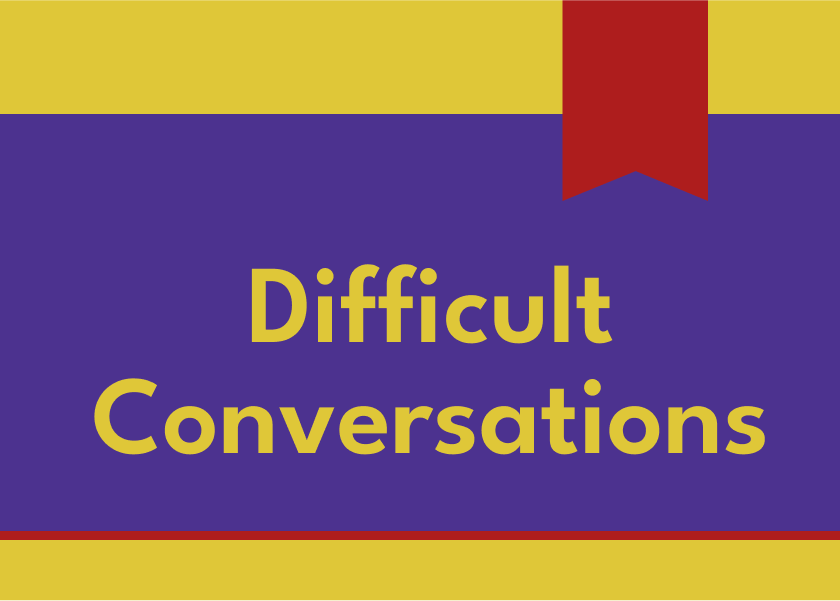Nonviolent Communication by Marshall Rosenberg - Summary
Transform your relationships and life with Nonviolent Communication! Learn to speak and listen with compassion, resolve conflicts peacefully, and connect deeply with yourself and others. Discover the power of NVC!

The following is a summary and review of the book Nonviolent Communication by Marshall Rosenberg.
A Language of Life - Your Path to Compassionate Connection
Are you tired of misunderstandings, arguments, and feeling disconnected from those around you? Do you long for deeper, more meaningful relationships built on empathy and understanding? Marshall B. Rosenberg's Nonviolent Communication: A Language of Life offers a transformative approach to communication that can revolutionise how you connect with yourself and others. This bestselling book has empowered countless individuals worldwide to navigate conflicts peacefully, express themselves authentically, and foster genuine compassion. This article provides a comprehensive overview of the book's key principles and offers actionable insights to help you integrate Nonviolent Communication (NVC) into your daily life. Reading this summary will equip you with a solid understanding of the core concepts, saving you time while providing actionable tips you can start using immediately.
Table of Contents
- About the Author
- Who Should Read This Book?
- Key Insights and Themes
- Detailed Summary
- Review
- Actionable Takeaways
- FAQs
- Conclusion
About the Author
Marshall B. Rosenberg, PhD (1934–2015), was the founder and for many years the Director of Educational Services for the Center for Nonviolent Communication. He was a world-renowned peacemaker, educator, and bestselling author who dedicated his life to promoting peace and understanding through communication. Rosenberg's work was influenced by his studies with Professor Carl Rogers on the components of a helping relationship. He was keenly aware of the power of language in either blocking compassion or fostering connection. His extensive experience in mediating conflicts across the globe, from war-torn regions to personal disputes, provided the foundation for the practical and impactful principles outlined in Nonviolent Communication: A Language of Life.
Who Should Read This Book?
Nonviolent Communication: A Language of Life is a valuable resource for anyone seeking to improve their communication skills and build healthier relationships. This includes:
- Individuals wanting to reduce conflict and foster peaceful dialogue in their families, romantic partnerships, and friendships.
- Parents and educators looking for compassionate and effective ways to connect with and guide children.
- Professionals in therapy, mediation, and counselling who want to enhance their ability to provide empathy and facilitate understanding.
- Business leaders and managers aiming to create more collaborative, respectful, and productive work environments.
- Anyone interested in personal growth and developing greater self-compassion and emotional awareness.
- Individuals involved in social change and activism who want to communicate their message effectively and nonviolently.
Essentially, if you speak and interact with others, this book offers profound insights and practical tools to enhance your ability to connect authentically and compassionately.
Key Insights and Themes
Here are some of the key takeaways and main ideas from Nonviolent Communication: A Language of Life:
- The Four Components of NVC: Observation, Feelings, Needs, and Requests form the core framework for expressing oneself honestly and receiving others empathically.
- Life-Alienating Communication: Certain forms of language, such as moralistic judgments, comparisons, denial of responsibility, and making demands, block compassion and hinder connection.
- Observing Without Evaluating: Separating objective observations from subjective evaluations is crucial for clear and non-reactive communication.
- Identifying and Expressing Feelings: Developing a rich vocabulary for feelings and taking responsibility for them, rather than blaming others, fosters understanding.
- Connecting Feelings to Needs: Recognising and articulating the universal human needs underlying our feelings helps to connect with ourselves and others on a deeper level.
- Making Clear and Concrete Requests: Expressing what we want in positive action language, rather than what we don't want, and ensuring requests are not demands, increases the likelihood of our needs being met compassionately.
- Receiving Empathically: Listening with our whole being to others' observations, feelings, needs, and requests, without judgment or the urge to advise or fix, fosters connection and understanding.
- The Power of Empathy: Empathy has the power to heal, defuse danger, revive lifeless conversations, and connect us even with silence.
- Self-Compassion: Applying the principles of NVC to our inner dialogue is essential for personal well-being and the ability to extend compassion to others.
- Resolving Conflicts Nonviolently: NVC provides a framework for mediating disputes by focusing on the needs of all parties involved and avoiding language that implies wrongness.
- Expressing Appreciation: Offering genuine appreciation by specifying what actions enriched our lives, how we felt, and what needs were met fosters connection and gratitude.
Detailed Summary
The book is structured to progressively introduce the core concepts and application of Nonviolent Communication.
Chapter 1: Giving From the Heart
Rosenberg introduces the core intention of NVC as a way of communicating that leads us to give from the heart. He emphasises the crucial role of language in either fostering compassion or contributing to violence. NVC aims to help us connect with each other and ourselves in a way that allows our natural compassion to flourish. The essence of NVC lies in our consciousness of four components: concrete actions we observe that affect our well-being, how we feel in relation to these observations, the needs that create our feelings, and the concrete actions we request to enrich our lives. NVC involves both expressing ourselves honestly through these four components and receiving others empathically through the same framework.
Chapter 2: Communication That Blocks Compassion
This chapter explores various forms of "life-alienating communication" that hinder our ability to connect with compassion. These include moralistic judgments that imply rightness or wrongness, making comparisons which are a form of judgment that can lead to misery, denial of responsibility through language that obscures our awareness that we are each responsible for our own thoughts, feelings, and actions, and other forms of communication such as making demands.
Chapter 3: Observing Without Evaluating
The first component of NVC involves separating observation from evaluation. Rosenberg argues that the highest form of human intelligence is to observe without evaluating. Mixing evaluation with observation can provoke defensiveness. He provides examples to distinguish between the two, emphasising the importance of being specific and contextual in our observations.
Chapter 4: Identifying and Expressing Feelings
This chapter focuses on the second component of NVC: identifying and expressing feelings. Rosenberg highlights the heavy cost of unexpressed feelings. He differentiates between actual feelings and thoughts or judgments that masquerade as feelings. Using specific words to describe our emotions helps the listener connect with what we are actually feeling, unlike vague terms like "good" or "bad". He provides lists of words to help articulate feelings.
Chapter 5: Taking Responsibility for Our Feelings
The third component involves recognising that our feelings are a result of our needs, not caused by other people's actions. Rosenberg critiques the use of phrases that attribute blame for our feelings to others. He emphasises connecting our feelings with our needs by using the formula "I feel... because I need...". Understanding and expressing our needs directly increases the possibility of finding ways to meet everyone's needs. He presents a list of basic human needs.
Chapter 6: Requesting That Which Would Enrich Life
The final component of expressing ourselves honestly in NVC is making clear and specific requests. Rosenberg stresses using positive action language, stating what we are requesting rather than what we are not. Requests should be clear, concrete, and aimed at enriching life. It's crucial to be conscious of what we are requesting and to differentiate between requests and demands. A request becomes a demand if the speaker blames or punishes if it is not complied with. The objective is to establish relationships based on honesty and empathy, where compliance is willing.
Chapter 7: Receiving Empathically
This chapter shifts focus to the second part of NVC: receiving empathically. Empathy is defined as a respectful understanding of what others are experiencing. It requires presence and focusing full attention on the other person's message, rather than offering advice or reassurance prematurely. Rosenberg emphasizes listening for the feelings and needs behind the words being spoken. Paraphrasing what we have understood can confirm accuracy and provide reassurance to the speaker.
Chapter 8: The Power of Empathy
Rosenberg elaborates on the transformative power of empathy. Empathy can heal pain, increase vulnerability, defuse dangerous situations, and revive lifeless conversations. He highlights the importance of empathising even with someone's "no". Behind intimidating messages are simply people appealing to us to meet their needs.
Chapter 9: Connecting Compassionately With Ourselves
Applying NVC to our inner dialogue is crucial for self-compassion. Rosenberg encourages us to remember our specialness and avoid internal violence through self-judgments and demands, particularly the word "should". He suggests translating "have to" to "choose to" to become more conscious of our motivations. Choices motivated by a desire to contribute to life are more fulfilling than those driven by fear, guilt, or obligation.
Chapters 10-14:
These chapters delve into applying NVC in various contexts, including conflict resolution, the protective use of force, liberating ourselves from old programming and resolving internal conflicts, replacing diagnosis with NVC in counselling, and expressing appreciation in a way that is genuine and fulfilling. In conflict resolution, avoiding language that implies wrongness and focusing on needs and actionable requests are key. Expressing appreciation involves specifying the action, the feeling evoked, and the need fulfilled.
Review
Nonviolent Communication: A Language of Life is widely acclaimed for its clear, practical, and transformative approach to communication. Its strength lies in providing a concrete four-part framework that can be applied to virtually any interaction. The book is filled with real-life examples and dialogues that illustrate the principles in action, making them accessible and relatable. Endorsements from renowned figures like John Gray and Deepak Chopra highlight its effectiveness in transforming conflicts into peaceful dialogues and fostering compassionate connections. Many reviewers praise its simplicity and the profound impact it can have on personal and professional relationships.
However, some readers might find the initial focus on the four components somewhat formulaic, and applying NVC in the heat of the moment can be challenging, as acknowledged by Vicki Robin. The emphasis on needs might also feel unfamiliar to those accustomed to more traditional communication styles. Additionally, consistently practising empathy, especially when faced with difficult or hostile communication, requires patience and dedication. Despite these potential challenges, the book's overall message of compassion and connection resonates deeply, making it a valuable tool for anyone seeking more fulfilling relationships and a more peaceful world.
Actionable Takeaways
Here’s how to apply these lessons in real life:
- Practice observing without evaluating: When someone says something you disagree with, try to identify the concrete actions or words without immediately labelling them as "good" or "bad".
- Identify your feelings: Pay attention to your physical sensations and emotions. Use a feelings vocabulary to articulate precisely how you are feeling in response to a situation.
- Connect your feelings to your needs: Ask yourself what underlying need is causing you to feel a particular way. Use the "I feel... because I need..." formula.
- Make clear and specific requests: When you want something from someone, express it in positive action language. Be clear about what you would like them to do, rather than what you don't want.
- Listen empathically: When someone is speaking, focus on understanding their observations, feelings, and needs without interrupting with advice or your own opinions.
- Paraphrase to ensure understanding: Reflect back what you think you heard the other person say to check for accuracy and show that you are listening.
- Practise self-empathy: Apply the four components of NVC to your inner dialogue. Notice your self-judgments and connect them to your unmet needs.
- Differentiate between requests and demands: Be mindful of what happens if your request is not met. If you tend to blame or punish, it's likely a demand. Aim for requests where you are open to hearing "no" and understanding the other person's needs.
- Express appreciation genuinely: When you appreciate something someone has done, specify the action, how it made you feel, and what need of yours was fulfilled.
FAQs
- What is Nonviolent Communication (NVC) about? NVC is a communication process developed by Marshall Rosenberg that helps individuals connect with themselves and others with compassion. It focuses on four key components: observation, feelings, needs, and requests, to facilitate honest self-expression and empathetic listening.
- Is "Nonviolent Communication: A Language of Life" worth reading? Yes, based on numerous endorsements and its widespread popularity, the book is highly recommended for anyone looking to improve their communication skills, build stronger relationships, and resolve conflicts peacefully.
- Is NVC just about being "nice"? No, NVC is not about being passive or avoiding conflict. It's about communicating authentically and expressing your needs clearly while also understanding and respecting the needs of others. It can involve the "protective use of force" when necessary, but aims to do so without punitive intent.
- How long does it take to learn NVC? Learning the principles of NVC is an ongoing process. While the core concepts can be grasped relatively quickly, consistently applying them in real-life situations takes practice and self-awareness.
Conclusion
Nonviolent Communication: A Language of Life offers a powerful and practical roadmap for transforming your communication and fostering deeper connections. By understanding and applying the four components of NVC, you can move beyond patterns of blame, judgment, and defensiveness towards a more empathetic and understanding way of relating. Whether you seek to improve your personal relationships, enhance your professional interactions, or cultivate greater self-compassion, the principles outlined in this book provide invaluable tools for creating a more peaceful and fulfilling life. Embrace the journey of learning and applying NVC, and you may discover, as many others have, the profound impact it can have on your world.
As an Amazon Associate, ShelfHelp may earn money from qualifying purchases. Needless to say, ShelfHelp only includes affiliate links to books we recommend and think are worth your time reading.




